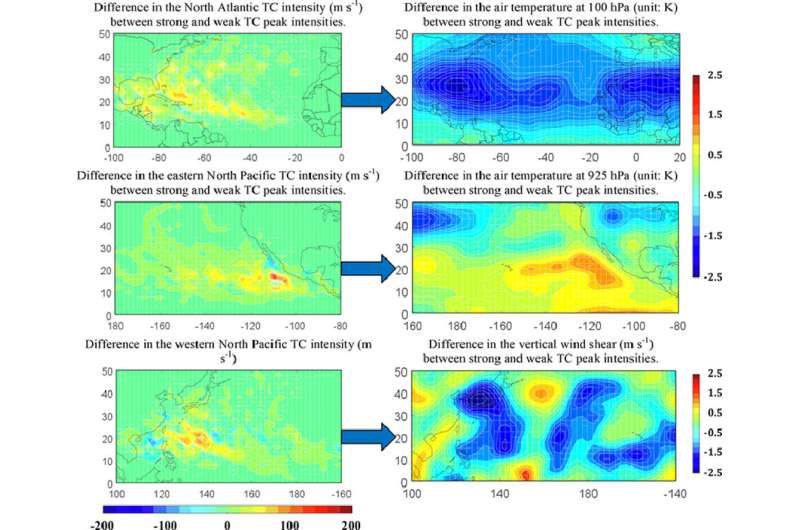Main factors affecting the peak intensity of the North Atlantic, western and eastern North Pacific tropical cycloness. Credit: Zhenxi Zhang
As natural weather disasters, tropical cyclones possess enormous destructiveness related to their intensity (maximum speed of tangential winds in the lower troposphere within 50 km of the tropical cyclone center). The long-term variability of tropical cyclone intensity is related to climate change, and it has been found that there has been a considerable increase in the number and proportion of intense tropical cyclones over the recent period since satellite observations of tropical cyclones have become available.
Change in air temperature is one aspect of climate change. Using reanalysis data, the responses of the North Atlantic, western North Pacific and eastern North Pacific tropical cyclone peak intensities to tropospheric air temperature have recently been reported in Atmospheric and Oceanic Science Letters by Dr. Zhenxi Zhang from the Inner Mongolia University of Technology, Hohhot, China, and colleagues.
"Air temperatures can affect the peak intensity of tropical cyclones over these three basin regions in distinct ways," says Dr. Zhang.
According to the study, significant cooling of the tropopause can strengthen the peak intensity of North Atlantic tropical cyclones. However, a strong tropical cyclone peak intensity for eastern North Pacific tropical cyclones is associated with warming in the lower troposphere. The peak intensity of western North Pacific tropical cyclones is mainly affected by vertical wind shear, not the atmospheric temperature.
More information: Zhenxi Zhang et al, Association between tropospheric temperature and tropical cyclone peak intensity over the North Pacific and North Atlantic, Atmospheric and Oceanic Science Letters (2021). DOI: 10.1016/j.aosl.2021.100117
Provided by Chinese Academy of Sciences
























